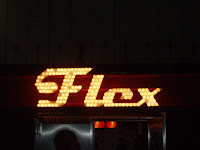After our final class, I returned to the Leopold with a few others who wanted to see the museum again. We first got a delicious English breakfast at the museum café and then proceeded to enjoy the wonderful offerings of the museum, including Kolo Moser, Gustav Klimt, and Egon Schiele. I had plenty of time to investigate the Moser exhibit this time, and it was extraordinary. The man was so talented, making furniture, drawings, posters, decorating buildings and churches, creating stamps and money, and of course, painting. He definitely is the face of the Secession and much of the Jugendstil style, since he decorated the Secession building, dominated the inside design of it for exhibitions, and created their symbol. After he left the Secession with Klimt (1905) and was co-founder of the Wiener Werkstätte (Vienna Workshop, which he left in 1907), he still created stunning and impressive art until his death in 1918 (the same year that took Klimt and Schiele as well). I really enjoyed viewing his furniture and the jewelry he designed, as well as his paintings – particularly “The Light”, and his vision of people (who he made with blue brush strokes). Unfortunately, I won’t be able to visit the church that he and Otto Wagner created – it is only open on Saturdays for one hour. Well, I guess I just have to come back to
The fin-de-siècle artists interest me so much more now because I know the historical context of their work, from the Ringstraβe era to the end of the Habsburg dynasty. Their work is an exploration outside the strict confines of the time, going into the new and exciting – whether it is the colors and gold of Klimt or the obsession with decay and death of Schiele. They wanted to throw out the falsity they felt the Ringstraβe embodied (all the ‘neo’ buildings, with no new styles). Prior to this trip, I had never even heard of Kolo or Egon, thanks to
Egon, in particular, fascinates me with his short life, chilling paintings, and sad biography. Dr. O did a fantastic job introducing us to his art when we first visited the museum, so it was great to go back and experience it again! I particularly enjoyed the work called “Transfiguration” this time around. I still cannot get over the way he paints hands. He is definitely an artist I cannot wait to learn more about, so I bought a book on him before I left the amazing museum. I am so jealous of Rudolf Leopold!
I then concluded my  items taken when the Nazis closed down the original museum and used some of the items to create an anti-Semitic display in the Naturhistorisches museum, saddened me. To know how deeply people wanted to destroy a culture and its people – and seeing the physical residue of that hatred – is a horrible and terrifying feeling.
items taken when the Nazis closed down the original museum and used some of the items to create an anti-Semitic display in the Naturhistorisches museum, saddened me. To know how deeply people wanted to destroy a culture and its people – and seeing the physical residue of that hatred – is a horrible and terrifying feeling.
I did not get such a deep feeling in the rest of the museum. The use of holograms – the purpose of them being so that you cannot touch it and truly be a part of it, but it looks lifelike – felt cloying and unimpressive. I realize that is their idea of memorializing the history – to make it so that the view changes with the location and to impart the feeling that one can never really be in the past – but it did not interest me.
After the museum visit, I did some shopping and headed out for dinner. We tried to go to a place the guidebook recommended, called Una, which has an amazing ceiling and is in the very  awesome MuseumsQuartier, but it was completely packed. Instead, we headed out to the always reliable (even in the pouring rain!) Rathaus for delicious Indian food, some sturm (oh, how I will miss that drink), and “Kiss Me Kate.” Then we headed for a night out at my favorite club ever – Flex in
awesome MuseumsQuartier, but it was completely packed. Instead, we headed out to the always reliable (even in the pouring rain!) Rathaus for delicious Indian food, some sturm (oh, how I will miss that drink), and “Kiss Me Kate.” Then we headed for a night out at my favorite club ever – Flex in
No comments:
Post a Comment